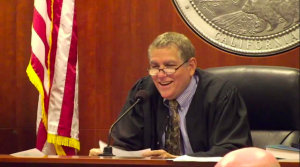September 30,2015
 I concur strongly with the recently passed New York State legislation finding Drug Court Judges unqualified to make certain treatment decisions. In my 2001 monograph, “Rational Drug Policy Reform: A Resorce Guide”, I spoke of the Drug court and the Drug Court Judge’s role “to motivate the drug abuser to comply with treatment requirements”, and concluded ” drug courts recognize that drug abuse is not primarily a criminal justice problem, but that the courts are a necessary component of its solution”.
I concur strongly with the recently passed New York State legislation finding Drug Court Judges unqualified to make certain treatment decisions. In my 2001 monograph, “Rational Drug Policy Reform: A Resorce Guide”, I spoke of the Drug court and the Drug Court Judge’s role “to motivate the drug abuser to comply with treatment requirements”, and concluded ” drug courts recognize that drug abuse is not primarily a criminal justice problem, but that the courts are a necessary component of its solution”.
“In 1961, the U.S. Supreme Court in the landmark case, Robinson v. California laid the groundwork for the drug court model. In Robinson, Justice Stewart speaking for the majority held that:
“It is unlikely that any State at this moment in history would attempt to make it a criminal offense for a person to be mentally ill, or a leper, or to be afflicted with a venereal disease. A State might determine that the general health and welfare require that the victims of these and other human afflictions be dealt with by compulsory treatment, involving quarantine, confinement, or sequestration. But, in the light of contemporary human knowledge, a law, which made a criminal offense of such a disease, would doubtless be universally thought to be an infliction of cruel and unusual punishment in violation of the Eighth and Fourteenth Amendments.”
Being an addict would no longer be a “moral affliction”, but be legally recognized as having a disease that needed treatment. While being in possession of illegal drugs was not a status offender and could be punished as a crime, from Robinson onward, treatment would become more acceptable and in some cases the preferred approach to the drug possessor. According to commentators, the Robinson decision spurred both the Nixon and Carter administrations to develop non-penal responses to drug offenders. In the 1970’s for example, TASC, a nationwide federal initiative, was designed to provide a bridge between the addict and the criminal justice system, providing treatment rather than punishment for the drug offender.
Even so, real reform of the drug laws remained dormant for decades. There was little interest or concern with dealing more effectively or humanely with the drug abuser. Treatment was an afterthought in most cases and generally considered a waste of time by criminal justice professionals and a public who didn’t believe it would work. The treatment providers, themselves, were starved for resources and, without much judicial support, had few powerful allies.
With the widespread acceptance of the Drug Court model, things have begun to change. Drug Court Practitioners accepted the notion that drug abuse is neither a moral problem, nor one of character, but a health issue that the court could impact if it acted in a pragmatic way. The court neither condemned the abuser nor makes excuses for him or her. For the first time, the court recognizes the reality of the abuser’s condition and attempted to create a program that worked within that reality.
As a consequence, the judge in a drug court uses incarceration as a therapeutic tool, to motivate the drug abuser to comply with treatment requirements. Punishment is never the goal of incarceration, nor is long-term imprisonment. Typically, drug courts use incarceration to respond to willful failures to comply with court orders rather than treatment failures. By making that distinction, the court acknowledges that there is certain conduct over which the drug abuser may have limited control, but other conduct that is appropriately sanctioned by the court with incarceration.
Drug Court Judges understand that a judge in the modern world needs to be more than arbiters of right or wrong, or finders of fact. In that sense too, Drug Courts provided the moral foundation for the present drug policy reform movement, because drug courts recognize that drug abuse is not primarily a criminal justice problem, but that the courts are a necessary component of its solution.” “Rational Drug Policy Reform: A Resorce Guide” (p.8:Drug Court Philosophy: The Pragmatic Foundations of Reform)

